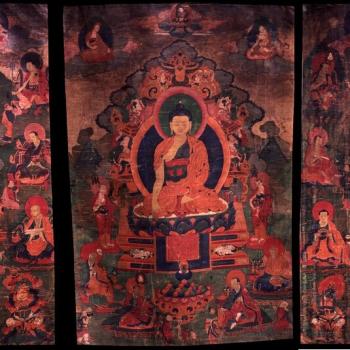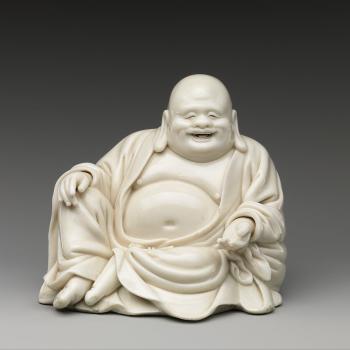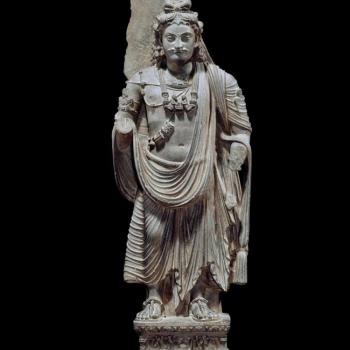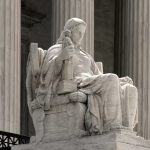Now that we have located the possible origin of the messianic idea in Zoroastrianism, it is only proper to turn to the religious tradition that actually formulated the concept as Jesus and His disciples would have understood it. The beginnings of the messianic framework that would someday scaffold Christianity can be found in ancient Judaism, specifically the Judaism of the Second Temple period, when the religion developed a finely-tuned apocalyptic sense. It was during this time that the messianic ideal became a key aspect of the Jewish faith, as the foretold future savior came to the forefront and eventually became known for the first time as the “messiah.” It was this development, which can be charted through the books of the Old Testament, that planted the seeds that would in a few centuries blossom into the Christian revolution.
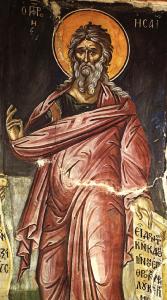
Where and when the messianic idea first emerged has continued to provoke debate. As noted in the last few entries, many scholars regard it as a borrowing from Zoroastrianism. But others view the idea of the messiah as the natural outgrowth of the concept of the covenant between God and His chosen people, which necessarily extends God’s saving promise to Israel into the future. This is the perspective of the Jewish Encyclopedia, which states, “though the name is of later origin, the idea of a personal Messiah runs through the Old Testament. It is the natural outcome of the future prophetic hope” (Jacobs and Buttenwieser, “Messiah”). Jürgen Moltmann, the eminent theologian whose work has done so much to revive a positive eschatology in Christianity, concurs. In his Theology of Hope, Moltmann concludes that the fundamental relationship between God and Israel is one of promise; God has vowed to shower Israel with endless blessings but has postponed the complete fulfillment of that promise, teaching the Israelites to live in a state of perpetual future expectation. This sense of future promise inevitably coalesces into the messianic ideal, or as Moltmann puts it, “the eschatology of the prophets grew up on the soil of Israel’s faith in the promise … In the prophets, despite all the newness of their message, the God who confronts Israel with his claims is no other than the Deus spei, the God of hope” (Moltmann 126). Of course, it is also not impossible for the messiah concept to be the natural outgrowth of Jewish religion and also a borrowing from the region’s other great monotheistic faith. Perhaps the Jewish people recognized in the Zoroastrian notion a tangible crystallization of the hoped-for deliverance that they were already looking for, with cultural osmosis contributing to what was already a natural progression.
But regardless of whether the messiah concept was a borrowing, an organic development, or a little of both, there can be no denying that the Jewish prophets of the exilic and post-exilic periods took the idea and made it their own. While the term “messiah” pops up here and there in earlier parts of the Old Testament, its first use to refer to a human being is in Isaiah 45.1., where it is applied, as noted in a previous entry, to the Persian monarch Cyrus the Great, who facilitated the return of the Jewish people to their homeland. However, in something of a historical coincidence, this first use of the term “messiah” comes to us in the same book that also develops the messianic idea—even if it never uses that exact term for the concept—to the point of maturity. For it is in the book of Isaiah that we find a constellation of prophecies that between them establish the core attributes which shall ever afterward define the Jewish understanding of the messiah who is to come.
It is now generally agreed among scholars that the Book of Isaiah is the work of three different persons writing at three distinct periods in Jewish history. It is the third Isaiah, writing in the post-exilic period, who applies the term “messiah” to Cyrus. But the first and second Isaiah are far more messianic, in that they speak directly of the future figure who will come to be known as the messiah. First Isaiah, the one most likely to have written before the exile, is the more celebrated of the two. It is in his work that the most famous messianic prophecy, and the one still recited in Christian churches on Christmas day, appears. This is Isaiah 9, which proclaims, “The people that walked in darkness have seen a great light … For a child is born to us, a son is given to us; he will bear the symbol of domination on his shoulder, and his title will be: Wonderful Counsellor, Mighty Hero, Eternal Father, Prince of Peace. Wide will be the dominion and boundless the peace bestowed on David’s throne and on his kingdom, to establish and support it with justice and righteousness from now on, for ever more,” (Isaiah 9:2-7). Here we see the messianic ingredients beginning to come together. The coming of a great king of Israel is foretold, who will hold a vast dominion and will reign in peace. This glorious period will be perpetual and without end, as indicated both by the ruler’s title of “Eternal Father” and the fact that the dominion and peace, the justice and righteousness, are explicitly said to last “for ever more.” To sum the prophecy up, then, a heroic and benevolent king, born of David’s line. will establish an everlasting period of peace and prosperity for Israel, ringing in the end of history when the Jewish people shall finally rest from their troubles. Thus, Isaiah 9 lays out, in a succinct and compact form, what would become the standard outline of the Jewish messianic narrative.
Then there is the famous Immanuel prophecy of Isaiah 7.14 which announces that “[a] young woman is with child, and she will give birth to a son and call him Immanuel … before that child has learnt to reject evil and choose good, the territories of those two kings before whom you now cringe in fear will lie desolate” (Isaiah 7:14-16). This prophecy has long been seen by Christians as foretelling the birth of Jesus, and thus has long had a messianic gleam attached to it. When taken on its own, however, without its future Christian repurposing, the messianic import of this prophecy falls into doubt. The child does not deliver Israel, he merely serves as a sign that Israel’s deliverance is at hand. Thus, it is less clear that this verse should be taken in the same messianic spirit as Isaiah 9. However, the connection made between the birth of a special child and Israel being saved from its enemies, while not fully messianic, does at least foreshadow the later, fuller forms Jewish and Christian messianism would take. And it certainly shows the narrowly nationalist focus which characterized Jewish messianic hope in its initial stages.
That being said, even with these pre-exilic origins, it was only in the exile and afterward that prophetic writers gravitated to the messianic ideal and began to work through its implications. We can see this work beginning in Isaiah 32. Isaiah 32 is the work of the second prophet, from the time of exile, and here he promises a future era in which “[a] king will reign in righteousness and his ministers rule with justice, each of them a refuge from the wind and a shelter from the storm” (Isaiah 32:1-2). During the reign of this great king, “the wilderness will become garden land and garden land will be reckoned as common as scrub. Justice will make its home in the wilderness, and righteousness dwell in the grassland; righteousness will yield peace and bring about quite trust for ever” (Isaiah 32:125-17). In addition to the previously established ideas of the just king and eternal peace, there is now the detail that Israel shall be transformed into a garden paradise, which it will, of course, remain ever after. This sense of transformation, the promise of a world made new, is precisely what needed to be added to the developing idea of the future king in order to make it truly messianic in our sense of the term. Because the prophecy of David’s heir has added this element of transformation and recreation of the world, or at least the Israelite part of the world, it has now become fully eschatological for the first time. The rule of the future king will not be simply a great event for Israel; it will fundamentally reshape the world and restore, at least to an extent, the paradisal state. Because he brings about a restructuring of the physical world itself into a better state, the messiah here begins his own restructuring from desired national hero to awaited world savior. The apocalyptic dimension of Jewish messianism has at last arrived.
Thus, in the Book of Isaiah, we can trace the development of the messianic idea from a basic hope for national deliverance to a fervent belief in the world’s final transformation. Along the way we find the restoration of the line of David, the deliverance of Israel and its future of eternal peace and prosperity, the recreation of the world as a paradise, and the final triumph of righteousness over evil, all key ingredients in Jewish, and later Christian, messianism. And then, of course, we also find the word “messiah” itself, applied for the first time to an earthly king. Admittedly, these prophecies were the work of three separate men divided by great expanses of time, and thus it may seem to skeptical moderns that the messianic idea it offers is simply a hodgepodge of diverse and divergent strands of Jewish thinking. But the Book of Isaiah has traditionally been read as a single work by a single author with a single message, as generations saw a continuity and coherence in its diverse prophetic strands. The various promises running through the Book of Isaiah about the destined savior-king, whatever their individual origins, proved to be compatible enough that they soon coalesced into the single, overarching image of the messiah. It was this image which would underpin the messages of post-exilic prophets such as the authors of the Books of Jeremiah and Ezekiel as well as that offered in a radically different form by the nascent religion of Christianity.
Works Cited
Jacobs, Joseph and Buttenwieser, Moses. “Messiah.” The Jewish Encyclopedia, 1906. MESSIAH – JewishEncyclopedia.com
Moltmann, Jürgen. Theology of Hope: On the Ground and the Implications of a Christian Eschatology, 1967. Minneapolis: Fortress Press, 1993.
The Book of the Prophet Isaiah. The Oxford Study Bible, edited by M. Jack Suggs, Katharin Doob Sakenfeld, and James R. Meuller. New York: Oxford University Press, 1992. 700-777.



